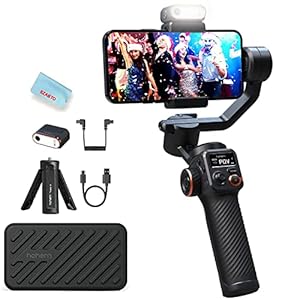Artist: Lorde
Album: Virgin
“Before Ella and I even started work on this album, she said she wanted to make an album that was without flourishes. It had to be very open. Just bare bones stuff. It had to have this really raw sound, not overly produced. It had to be about Ella’s vocal, and behind that the drums. We really bonded over our love of drums. Throughout the making we were holding on to that raw element and the focus on her vocal. So no perfect performances, no crazy riffs here, no crazy runs there. It’s why the arrangements are very open, and I play most instruments, mostly keyboards and drums, though there are guitar, bass and strings as well.”
Speaking is Jim-E Stack, co-writer and co-producer of Lorde’s fourth album, ‘Virgin’. The ‘bare bones’ and self-revealing angle is also illustrated by the album’s cover, featuring an X-ray pic of Lorde’s pelvis, and her web site statement: “The colour of the album is clear, like bathwater, windows, ice, spit. Full transparency. The language is plain and unsentimental. The sounds are the same wherever possible.”
PERFECT FIT
The minimalist arrangements and production, with rough sonics and distortion, also often on Lorde’s vocals, work well with the soul-baring lyrics on ‘Virgin’. When Jim-E recounts his background, it quickly becomes obvious why he was a perfect fit to help Lorde realise her raw and honest approach.
“As a kid growing up in San Francisco, listening to music was an emotional outlet for me. It spoke to me like nothing else could. When I was 10 or 11, after two years of begging my mom for a drum set, she obliged, and I had drums in the garage. Friends at school played guitar and bass, and we formed your typical pre-teen cover bands, playing hard rock and heavy metal, AC/DC and Judas Priest and so on. I had a drum teacher who taught me jazz. My playing got a lot better, and I joined jazz bands both in and outside of my high school. I loved the camaraderie of playing with other kids, who also often didn’t quite fit in. I’d found my home in music. There was a real sense of community.
“Later on, I had this desire to make music that was my own expression, and wasn’t as much about a group expression. I remember hearing albums like Untrue (2007) by Burial and Donuts (2006) by J Dilla and for the first time learning what a producer was. I was like, ‘How does one person make this?’ I learned that you can be a lone person with Sony Acid Pro or an SP1200 or an MPC and make little 60 to 90-second songs that speak to how you’re feeling. That blew my mind. I pirated Logic on my mom’s computer, and I went down the path of making music alone, with the computer as my instrument.
“I was really energised and excited by making my own music. Having come from an environment where you’re always with friends, it was really amazing to make stuff alone. SoundCloud became my online community. It got me into DJing, and had little successes here and there as a solo artist. But I didn’t really feel it was going anywhere. And by 2015 or so I was getting tired of making everything alone. There’s a sense of camaraderie and community around music making with other people that I was really missing, because my background had been doing stuff with other people.”

STACK’S ON STACK
The title of Stack’s first solo album, Tell Me Where I Belong (2014), is telling for his search for, well, belonging. The album was well-received, but Stack was drawn to songwriting and production with and for others. “I went to LA a couple of times, and I was lucky enough to make some songs with a few friends out there, like Dan Nigro and Ariel Rechtshaid. I found that I was expressing myself better in a collaborative environment. At the end of 2015, I decided to move to LA permanently. I soon found myself doing sessions most days of the week. I felt at home working with other musicians. I felt like I was living my dream, and making enough money to have a roof over my head and food on my plate.”
Stack self-released more solo work, including an EP called it’s ‘Jim-ee’ (2017) and a second album, ‘Ephemera’ (2020). He co-wrote and co-produced most of Kacy Hill’s second and third albums, ‘Is It Selfish If We Talk About Me Again’ (2020) and ‘Simple, Sweet, and Smiling’ (2021), and as his career expanded he contributed to tracks by Haim, Diplo, Caroline Polacheck, Charli XCX, Dominic Fike, Lola Young, The Kid LAROI. 2025 marked major achievements for Stack, as he was one of the main co-writers and co-producers on three important records, Bon Iver’s ‘Sable, Fable’, Animé’s ’13 Months of Sunshine’, and Lorde’s ‘Virgin’.
While the music on three albums is very different, for Stack there’s an essential common thread. “I learned that the people I work with best, whether it’s Justin [Vernon], Animé, Dominic Fike, or Ella [Lorde], they are also people I’m friends with in real life. For me, it’s not a matter of, ‘I’ll pop into this session with people, though we don’t really have anything in common, and we never hang out outside of it.’ I often think it must be amazing to be able to hop in a room with anyone, and crank out a song. But the kind of records I help make are often very personal and speak to something deep inside the artist. Everything I’ve done or has come out this year has been with people that I have a true and real and authentic connection with.”
DEMO DATING
Stack recalls that he first met Lorde early 2022. “She was rehearsing in LA for her ‘Solar Power Tour’ in LA. At the same time, she was in the early stages of figuring out what a next album would be like, thinking about what sound she was going to pursue. She and I got along well, and in between different legs of her tour she came to my studio and we tried making a song or two – these songs haven’t come out, although she performed one at the end of her tour. There was clearly something that clicked and flowed. We tried another week of writing at Electric Lady in New York, but nothing came out of that. At this point there were no plans of us making an album or anything like that.
“After she finished the tour in August 2023, she said, ‘maybe we should try writing again. See what happens.’ She had written with a variety of other people as well. So in the fall of 2023 we went into Flux Studios in New York to make some demos. I think we felt less under pressure there. The first thing we really clicked on was what became ‘What Was That’. At that point we felt, ‘okay, we can really do this.’ We wrote some more songs and it was clear there was something for us to pursue creatively.
“At that time I was also working with Justin [Vernon] on the Bon Iver album, at his April Base Studio in Wisconsin, at my studio in LA, and sometimes at Justin’s in LA. By the end of 2023, Ella and I reconvened at my studio in LA, and that’s when the songs really started to come, like ‘Hammer’ and ‘Man of the Year’. My room has a piano, some synths, some guitars and basses and speakers. It’s a fairly informal writing environment. In making an album that’s quite personal and speaks to something deeper, you kind of need to be in an environment that doesn’t feel too high pressure or professional. So we would reconvene at my place every couple of weeks for the next year and a half.”
There was a femininity to this album that we really wanted to keep front and centre. And a lot of these sludgy, thick low end moments didn’t seem to do that justice


KEEPING IT SIMPLE
Stack’s Los Angeles home studio may feel informal, and he insists on using the word ‘simple’ to describe it, but it’s nonetheless stocked with some choice gear and instruments. “I have a Yamaha upright piano and my favourite synths here are a Roland Juno 106, a Moog Rogue, a Korg Polysix, and an Oberheim OB6. The Rogue is one of my first synths. I think it’s from 1981. It has just two oscillators, three octaves, is definitely on the cheaper end, and I love its simplicity. I can do anything with it, including crazy leads and bass. I also love that Korg Polysix is mono, and doesn’t sound too rich. There’s something very pure and unaffected about it.
“All my keys go into an API 3124 preamp. That’s the great keys sauce for me. It’s all pretty simple. I don’t go that crazy on gear. Capturing the raw idea well is what matters most. Particularly when you use your studio a lot to start stuff, it’s important that the room feels relaxed and not too high pressure. I use Universal Audio Apollo x8 and x16 interfaces and my monitors are ATC SCM25s. I love them because they’re in most studios these days. Justin’s studio has them and they are also at Flux, Henson and Electric Lady. You can show up anywhere and know what stuff sounds like.
“My mics again are simple. My piano is pretty bright, so I have Coles ribbon mics on it going into a BAE 1073 mic pre. For vocals I’ve used the Soundelux USA U99 for a long time. It’s a mic that Ariel Rechtshaid had, and because Dan Nigro and I on some level are offspring of Ariel’s, we each ended up getting that mic as well. Now these mics are on a bunch of crazy, huge records. [Rechthaid has enjoyed hits with Haim, Charli XCX, and Adele, and Nigro is known for his work with Olivia Rodrigo and Chappell Roan]. My U99 goes into a Neve 1272 mic pre and an Urei 1176 compressor.
“That’s my main vocal chain, but I also always have a Shure SM7 up and running. There are so many vocals on Justin’s record and on Ella’s record that are from the demos, with the SM7 being used, even with the monitors on. I like the human quality it brings. A big part of Ella’s album was spent getting great vocals, but a lot of the SM7 recordings made it onto the final recordings. I also have an AKG D12, which I put on a guitar amp when I play synths through it.
“In other studios, on both Ella’s album and a lot of Justin’s album, we used a Neumann U47 for vocals, usually going through a Neve 1073 and a Tube-Tech CL-1B. But the vocal chain still changed from song to song. Also, I use Logic, and we did the whole of Ella’s album in Logic, and moved to Pro Tools for the mix. We also started a lot of stuff on Justin’s album in Logic, but then moved to Pro Tools pretty early in the process, because that album was so live-tracking intensive. It’s been fun jumping between the two DAWs the past year. Being a little out of your element sometimes forces you to learn.”
(function($){
function bsaProResize() {
var sid = “86”;
var object = $(“.bsaProContainer-” + sid);
var imageThumb = $(“.bsaProContainer-” + sid + ” .bsaProItemInner__img”);
var animateThumb = $(“.bsaProContainer-” + sid + ” .bsaProAnimateThumb”);
var innerThumb = $(“.bsaProContainer-” + sid + ” .bsaProItemInner__thumb”);
var parentWidth = “970”;
var parentHeight = “450”;
var objectWidth = object.parent().outerWidth();
// var objectWidth = object.width();
if ( objectWidth 0 && objectWidth !== 100 && scale > 0 ) {
animateThumb.height(parentHeight * scale);
innerThumb.height(parentHeight * scale);
imageThumb.height(parentHeight * scale);
object.height(parentHeight * scale);
} else {
animateThumb.height(parentHeight);
innerThumb.height(parentHeight);
imageThumb.height(parentHeight);
object.height(parentHeight);
}
} else {
animateThumb.height(parentHeight);
innerThumb.height(parentHeight);
imageThumb.height(parentHeight);
object.height(parentHeight);
}
}
$(document).ready(function(){
bsaProResize();
$(window).resize(function(){
bsaProResize();
});
});
})(jQuery);
(function ($) {
var bsaProContainer = $(‘.bsaProContainer-86’);
var number_show_ads = “0”;
var number_hide_ads = “0”;
if ( number_show_ads > 0 ) {
setTimeout(function () { bsaProContainer.fadeIn(); }, number_show_ads * 1000);
}
if ( number_hide_ads > 0 ) {
setTimeout(function () { bsaProContainer.fadeOut(); }, number_hide_ads * 1000);
}
})(jQuery);
WRITE FROM WRONG
Having given the general outlines of his studio and his work with Lorde, Stack went into more details about their actual writing process. “It varied from song to song. For ‘What Was That’ I programmed some drums, put an OP-1 cello sample on top of that, played big, juicy bass notes on a MiniMoog, and added a small Prophet 5 lead line. It was a very basic beat, and she freestyled a melody over it. ‘Shapeshifter’ started with a drum beat I had made and played chords over. For ‘Man of the Year,’ Ella asked for some very stripped down bass, so I laid down a basic, root note bass part, and added some two note chords. We looped that, and again she freestyled over that.
“‘Clearblue’ was initially just lyrics Ella had for quite some time. She wanted to do something that was a cappella and raw. We found some chords for it on the piano, she then sang the melody to a drone note, and from there we found vocal harmonies that felt good and that carried along through the whole song. That song was as untethered as possible. There’s no click. There is some chord structure in the harmonies, but it had to be free and raw. Ella sang all vocal parts with my SM7.
“For the harmonies on that song to fit around her lead vocal, we pitched up the main vocal a couple steps, recorded the harmonies, and then we’d pitch everything down again, so her harmony vocals would be in a lower tone. We used a variety of different effects on her voice, including SoundToys AlterBoy, Antares AutoTune, and when we were at Electric Lady, a real EMT plate. The whole song was about treating vocal tracks in different ways and getting a lot of different textures and pulling them all together.”
WHEN I WANT IT
The song ‘What I Want’ took a year and a half to finish. “It was one of those songs where many of the pieces were there, but it wasn’t quite working. So I brought in Dan [Nigro]. We spent maybe four days, with him playing some bass, guitar, synths, and piano here and there. I also added some piano. He was very helpful in seeing what the song needed to be, moving things around, which opened it up in a big way. But something still wasn’t clicking. One evening at the studio in LA, I banged out some different drums on the Pulsar 23 [drum machine]. They instantly felt good and led us to rearrange some more parts. I later recorded some live drums to give the song some air and make it feel more alive, and everything finally locked into place.
“Other musicians came in at various points, like Devonté Hynes, who played cello and bass on ‘Man of the Year’ and electric guitar on ‘Favourite Daughter’, all at Flux Studios. We plugged the cello into a Princeton amp, and cranked it up in the hallway, and recorded it like that. Andrew Aged played electric guitar on five songs during the summer of 2024, at my studio. We were after the bite and grit and raw power of his tone. Ella and I also decided that ‘Shapeshifter’ needed live drums so we recorded Craig Weinrib while we were in New York. That gave the song some air.”



RAW GRIT
Throughout the recording process, Lorde and Stack went for gritty sounds, for example in the raw, meaty drum and synth sounds featured on the album. “Having a drumming background, I’m always drawn to drum sounds when I make them on the computer. Ironically, when I’m programming drums, I’m after a live drum feel! I’ll maybe cut out some random 16th notes from the hi-hat or I’ll add a delay with a little feedback to make it sound like ghost notes.”
“Ella’s favourite instrument is drums, which is unusual for a singer. Drums can really change a song, so we knew that the drum sounds would be very important in shaping the album. For example, on ‘Current Affairs’ we had a mellow, subby kick, but she felt it wasn’t right, so I added a Pulsar 23 kick that was crunchier and dirtier, and suddenly the song became itself, just with the kick. It’s the only drum sound in the entire song.”
In many ways, the emphasis in the arrangements on ‘Virgin’ is more on crunchy mid-range than the modern tendency for huge bass. “That wasn’t deliberate,” comments Stack. “With so much of this stuff we went in without any intention. But we knew when it didn’t feel right. An early version of ‘Favourite Daughter,’ for example, had these amazing, sludgy, knocking drums and lots of MiniMoog. It had lots of low end and sounded awesome and warm.
“But it wasn’t right for the lyrical content. A song about Ella’s relationship to her mother could not have slamming low end. It had to be a more bouncy, mid-range kind of song. I don’t want to speak for Ella, but there were times when really guttural low end 808s didn’t feel feminine. There was a femininity to this album that we really wanted to keep front and centre. And a lot of these sludgy, thick low end moments didn’t seem to do that justice.”
VOCAL PRIORITIES
According to Stack, they were “very mindful” of making sure Ella’s vocals would not be overwhelmed by the crunchy, mid-rangy production. “I wouldn’t say we were carving out a space for her voice, but more that we built the arrangements around her voice. The album needed to be raw and the vocal needed to be intimate and in your face. It was about prioritising her vocal, not ‘how does the vocal fit around our production?’ So the vocal would often stay quite loud. There would be moments where it started to feel buried, and we would be like, ‘we got to mute a bunch of stuff’. Or sometimes we would turn a vocal up +4dB, and all of a sudden the song would feel finished.
“In terms of vocal effects, an outboard AMS RMX16 was a big thing across the album. We would often have parallel AMS tracks, set to a pretty basic chorus or ambience setting. Occasionally, like on ‘Current Affairs’, we used the UAD AMX plugin. We also often used the Thermionic Culture Vulture, and I came to love the SoundToys Devil-Loc on her vocals. It adds grit and intensity, and brings the room and breaths in your face. Again, with this album being about rawness and having jagged edges, the Devil-Loc was huge in getting a crunchy vocal sound in the moments where we needed it.”
ELECTRIC LADY FINALE
‘Virgin’ was finished at Electric Lady Studios in New York. “We finished the album in March of this year. What we did during that last phase depended on the song. On some, a lyric wasn’t quite right, and we would need to recut a line. On others, ‘What Was That’, for example, it needed more air, and that’s when I cut the live drums over that. ‘Broken Glass’ was the last to come together. We had the production for a long time, but the lyrics weren’t quite right.
“It’s funny finishing a project like this. Sometimes there is a very clear path of tightening up. It’s redoing this line. It’s recording that. But with this album being a very, fluid, living and breathing thing, songs required very different things at different times. Like finishing ‘Current Affairs’, needing that kick drum. Everything came to a head during those final months. We could spend forever doing things, but eventually, when we felt what ‘Virgin’ was becoming what we were after, ie. this very raw and primal-sounding album, finishing was about not overdoing it, and leaving edges unsanded.”
The post Producing Lorde appeared first on AudioTechnology.
Trending Products

Video Conference Lighting Kit, Ring...
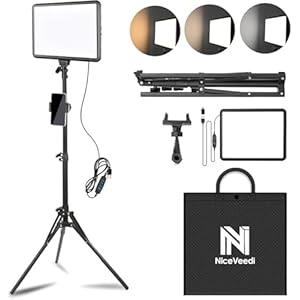
15W LED Video Light Kit
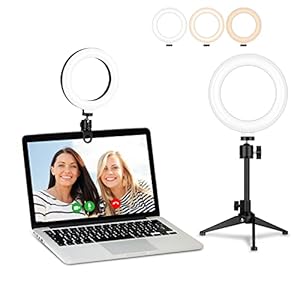
Desk Ring Light for Zoom Meetings &...
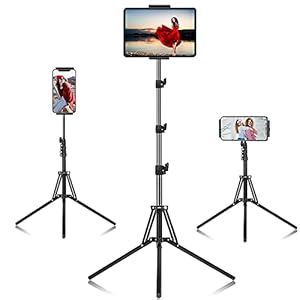
SAMHOUSING Ipad Tripod Stand, with ...
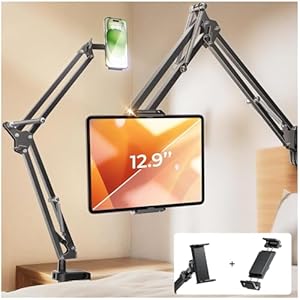
LISEN Tablet Stand
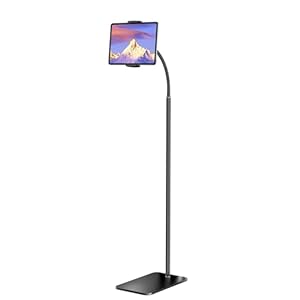
LanPavilion iPad Stand, Adjustable ...

DJI Osmo Mobile SE, 3-Axis Phone Gi...
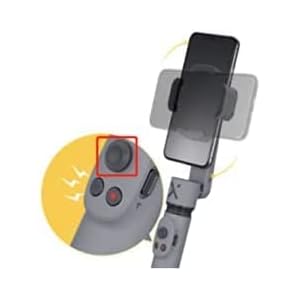
2pcs Original Joystick Parts for Zh...
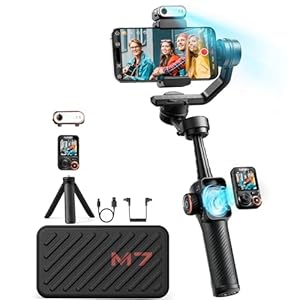
hohem iSteady M7 Gimbal
